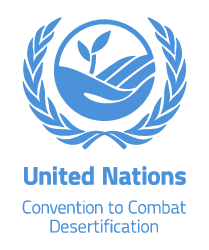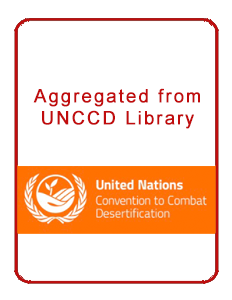Location
The United Nations Convention to Combat Desertification in Those Countries Experiencing Serious Drought and/or Desertification, Particularly in Africa (UNCCD) is a Convention to combat desertification and mitigate the effects of drought through national action programs that incorporate long-term strategies supported by international cooperation and partnership arrangements.
Members:
Resources
Displaying 26 - 30 of 586Governing drylands as global environmental commons
Meeting the Sustainable Development Goals requires drylands sustainability. Treating drylands as global environmental commons enables better tailored governance responses. Key nested governance elements for drylands involve setting goals, monitoring and delivering sanctions across scales. The present global governance system for drylands only partially delivers these elements. Drylands require a particular focus on linking local and global governance.
Forest tenure pathways to gender equality: A practitioner’s guide.
This practitioner’s guide explains how to promote gender-responsive forest tenure reform in community-based forest regimes. It is aimed at those taking up this challenge in developing countries. There is no one single approach to reforming forest tenure practices for achieving gender equality and women’s empowerment. Rather, it involves taking advantage of opportunities that emerge in various institutional arenas such as policy and law-making and implementation, government administration, customary or community-based tenure governance, or forest restoration at the landscape scale.
Promoting the sustainability of terrestrial ecosystems and halting desertification, land degradation and biodiversity loss.
Facts and Figures: ➡ Every minute, 23 hectares of arable land are lost due to drought and desertification. ➡ Over the last two decades, approximately 20 per cent of the Earth’s vegetated surface has shown persistent declining trends in productivity, mainly due to unsustainable land and water use and management practices. ➡ Every year, 13 million hectares of forest are lost that are home to more than 80 per cent of all land-based species and which provide livelihood to 1.6 billion people.
Progress Towards the SDG Land Degradation and Restoration Commitments
Since the commitments and reporting requirements of the SDGs ov erlap significantly with those of the UNFCCC and UNCCD, policy designe rs have mutually reinforcing incentives to advance this SDG commitment. When env ironmental degradation is minimized and restoration efforts are prioritized , ecosystems can sequester and store more carbon and lessen the impact of some c limate change effects.
Health and Terrestrial Ecosystems
Ecosystems and Biodiversity Facts and Figures # The IPBES Report (5) stated that “around 1 million animal and plant species are now threatened with extinction, many within decades, more than ever before in human history”.



